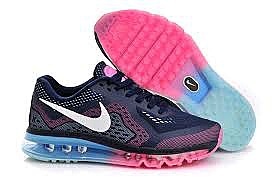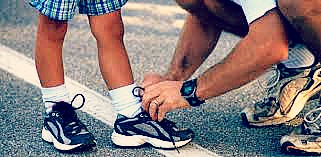A study by Mehl et al. examined the national estimates of running-related injuries in children to adolescents (6 -18 years old) and found that 64.4% were lower leg injuries, and specifically, ankle injuries accounted for 31.4% of all injuries!
Does this mean that children have weak ankles? No. The data again reflects the problem with modern footwear.
Overly cushioned running shoes cause children to run without any awareness of their mechanics. Perceptual awareness of foot-ground interactions shapes the way we run to a level that is ‘ankle-friendly’, but is inhibited through the use of modern footwear.
Though researchers exhaustively look for explanations as to why these injuries exists in children, a more definitive answer can be found by comparing injury incidences between barefoot and shod runners.
- More children in Ethiopia and Kenya run compared to American or Canadian children.
- East African children run longer distances and run barefoot and ankle injuries are non-existent.
Yet, for some reason, experts fail to accept the reality that barefoot breeds better child runners to become better runners as adults! This thinking, of course, derives from the negative psychological attitudes towards the barefoot condition in the Western world.
There are, however, past reports that provides a more pragmatic perspective on how cushioned running shoes account for more injuries than the barefoot condition.

The antiquated belief that the feet are inherently weak and fragile, especially in youth and the elderly, drives footwear manufacturers to make unusually compliant shoes. Yet, as shoe cushioning increases, so does the perceptual illusion of landing, according to Robbins and Gouw.
The researchers also pointed out that the perceptual illusion of landing is enhanced during running in thicker, cushioned running shoes.
Children get ankle sprains and strains from running because of the plantar sensory consequences imposed by cushioned, heeled running shoes.
- Children in such footwear underestimate impact and forgo the natural tendency to forefoot strike during running.
- Instead, they land directly on the heel on cushioned material that compromises balance which triggers more reflexively negative movements associated with the development of ankle injury.
Since ankle injuries in running is directly related to insufficient proprioceptive feedback, and thick cushioning corrupts sensory input at the feet, the obvious solution is to encourage children to run in barefoot-like running shoes where proprioception inhibition is minimized giving them the urge to exert proper landing behavior.
More From Run Forefoot:
- Forefoot Running for Better Joint Protection
- Good Shoes for Forefoot Runners
- Never Heel Strike in the Vibram Five Fingers
- Foot Fractures in Heel Runners – Why They Get Them
References:
Mehl et al. Running-related injuries in school-aged children and adolscents treated in emergency departments from 1994 through 2007. Clin Ped, 2011; 50(2):126-132
Robbins SE and Gouw GJ. Athletic footwear: unsafe due to perceptual illusions. Med Sci Sports Exerc, 1991; 23(2): 217-224.
Bretta Riches
BSc Neurobiology; MSc Biomechanics candidate, ultra minimalist runner & founder of RunForefoot. I was a heel striker, always injured. I was inspired by the great Tirunesh Dibaba to try forefoot running. Now, I'm injury free. This is why I launched Run Forefoot, to advocate the health & performance benefits of forefoot running and to raise awareness on the dangers of heel striking, because the world needs to know.
Latest posts by Bretta Riches (see all)
- Heel Lifts Increase Injury in Runners - 16/04/2024
- Are Minimalist Shoes Good for Seniors? YES! - 14/04/2024
- BIG Deals On Running Gear And More! - 09/04/2024


Leave a Reply